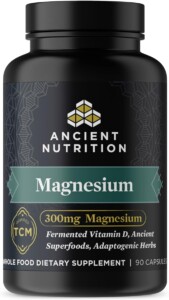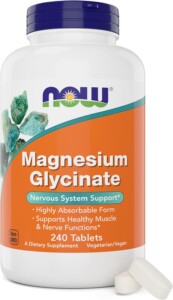How to Stop Period Cramps: Effective Strategies and Remedies
If you are searching How to Stop Period Cramps, please keep your eyes at this post.
Menstrual cramps, or dysmenorrhea, are a common issue that many women face each month. These cramps, which can range from mild to severe, often disrupt daily activities and can be quite debilitating. Understanding how to stop period cramps, how to stop cramps from a period, and how to stop cramps on legs can significantly improve your quality of life during menstruation. This blog will explore effective strategies and remedies to alleviate menstrual cramps and help you find relief.
Understanding Menstrual Cramps
Menstrual cramps are caused by the contraction of the uterus as it sheds its lining. These contractions are triggered by hormone-like substances called prostaglandins. Higher levels of prostaglandins are associated with more severe menstrual cramps. Cramps can occur in the lower abdomen, lower back, and legs, causing discomfort and pain.

How to Stop Period Cramps
1. Over-the-Counter Pain Relief
Over-the-counter (OTC) pain relievers such as ibuprofen (Advil, Motrin) and naproxen (Aleve) are commonly used to alleviate menstrual cramps. These medications work by reducing the production of prostaglandins, thereby decreasing pain and inflammation. It’s important to follow the recommended dosage and consult with a healthcare provider if you have any underlying health conditions.
>>>> Order Best selling pain-relief supplement <<<<
2. Heat Therapy
Applying heat to the lower abdomen or lower back can provide significant relief from menstrual cramps. Heat helps to relax the muscles of the uterus and increase blood flow, reducing pain. You can use a heating pad, hot water bottle, or even take a warm bath to soothe cramps. For convenience, there are also adhesive heat patches available that can be worn under clothing.
3. Hydration
Staying hydrated is crucial during your menstrual cycle. Dehydration can exacerbate cramps and cause bloating. Drinking plenty of water helps to reduce bloating and flush out excess fluids. Herbal teas such as chamomile and ginger tea are also beneficial as they have anti-inflammatory properties and can help soothe cramps.
4. Exercise
While it may seem counterintuitive to exercise when you’re in pain, physical activity can actually help reduce menstrual cramps. Exercise increases blood circulation and releases endorphins, which are natural painkillers. Activities such as walking, swimming, yoga, and gentle stretching can be particularly effective in relieving cramps.
5. Dietary Adjustments
Certain dietary changes can help reduce menstrual cramps. Eating a balanced diet rich in fruits, vegetables, whole grains, and lean proteins can support overall health and reduce inflammation. Foods high in omega-3 fatty acids, such as salmon, flaxseeds, and walnuts, have anti-inflammatory properties that can help alleviate cramps. Additionally, reducing caffeine and salt intake can minimize bloating and discomfort.
6. Herbal Remedies
Several herbal remedies have been found to be effective in reducing menstrual cramps. Some of the most commonly used herbs include:
– Ginger: Known for its anti-inflammatory and pain-relieving properties, ginger can help reduce the severity of menstrual cramps. You can consume ginger tea or take ginger supplements.
– Turmeric: Curcumin, the active ingredient in turmeric, has anti-inflammatory effects that can help ease cramps. Adding turmeric to your diet or taking supplements can be beneficial.
– Fennel: Fennel seeds have antispasmodic properties that can help relax the uterine muscles and reduce cramps. You can chew fennel seeds or drink fennel tea.
How to Stop Cramps from Period
1. Massage
Massaging the lower abdomen and lower back can help relieve menstrual cramps. Using essential oils such as lavender, clary sage, or peppermint oil during the massage can enhance the pain-relieving effects. These oils have anti-inflammatory and muscle-relaxing properties. Gently massage the affected area in circular motions to reduce pain and discomfort.
2. Acupuncture and Acupressure
Acupuncture and acupressure are traditional Chinese medicine techniques that involve stimulating specific points on the body to relieve pain. These techniques can help balance the body’s energy flow and reduce menstrual cramps. Acupuncture involves inserting thin needles into the skin, while acupressure involves applying pressure to certain points. Both methods can be effective in managing period cramps.
3. Birth Control
Hormonal birth control methods such as pills, patches, injections, and intrauterine devices (IUDs) can help regulate menstrual cycles and reduce the severity of cramps. These methods work by thinning the uterine lining and reducing the production of prostaglandins. It’s important to consult with a healthcare provider to determine the most suitable birth control method for you.
4. Magnesium Supplements

Magnesium is a mineral that plays a crucial role in muscle relaxation and reducing inflammation. Taking magnesium supplements or consuming magnesium-rich foods such as leafy greens, nuts, seeds, and whole grains can help alleviate menstrual cramps. However, it’s important not to exceed the recommended dosage of magnesium supplements.




5. Stress Management
Stress can exacerbate menstrual cramps and make them more difficult to manage. Practicing stress management techniques such as deep breathing, meditation, mindfulness, and progressive muscle relaxation can help reduce stress and alleviate cramps. Taking time for self-care and relaxation during your menstrual cycle is essential for managing pain and discomfort.
How to Stop Cramps on Legs
Menstrual cramps can sometimes extend to the legs, causing additional discomfort. Here are some strategies to relieve leg cramps during your period:
1. Stretching Exercises
Stretching can help relieve leg cramps by increasing blood flow and relaxing the muscles. Some effective stretches include:
– Calf Stretch: Stand facing a wall with your hands placed against it. Step one foot back and keep it straight with the heel on the ground. Bend your front knee and lean forward until you feel a stretch in your calf. Hold for 20-30 seconds and switch legs.
– Hamstring Stretch: Sit on the ground with one leg extended and the other leg bent, with the sole of your foot against your inner thigh. Reach towards your toes of the extended leg and hold for 20-30 seconds. Switch legs and repeat.
2. Warm Compress
Applying a warm compress to the legs can help relax the muscles and reduce cramps. You can use a heating pad, hot water bottle, or warm towel. The heat increases blood circulation and relieves pain.
3. Epsom Salt Bath
Taking an Epsom salt bath can help alleviate leg cramps. Epsom salt contains magnesium, which helps relax muscles and reduce inflammation. Add a cup of Epsom salt to warm bathwater and soak for 15-20 minutes.
4. Proper Hydration
Dehydration can contribute to leg cramps. Ensure you drink enough water throughout the day to stay hydrated. In addition to water, electrolyte-rich drinks such as coconut water can help maintain proper hydration levels.
5. Potassium-Rich Foods
Potassium is an essential mineral that helps regulate muscle contractions. Consuming potassium-rich foods such as bananas, oranges, spinach, and sweet potatoes can help prevent and relieve leg cramps.


Conclusion
Managing menstrual cramps effectively involves a combination of lifestyle changes, dietary adjustments, and natural remedies. By understanding how to stop period cramps, how to stop cramps from a period, and how to stop cramps on legs, you can significantly improve your comfort and well-being during your menstrual cycle. Remember to consult with a healthcare provider if you have severe or persistent cramps, as they may indicate an underlying medical condition. With the right strategies and remedies, you can take control of your menstrual cramps and lead a more comfortable life.
>>>> Order Best selling pain-relief supplement <<<<

